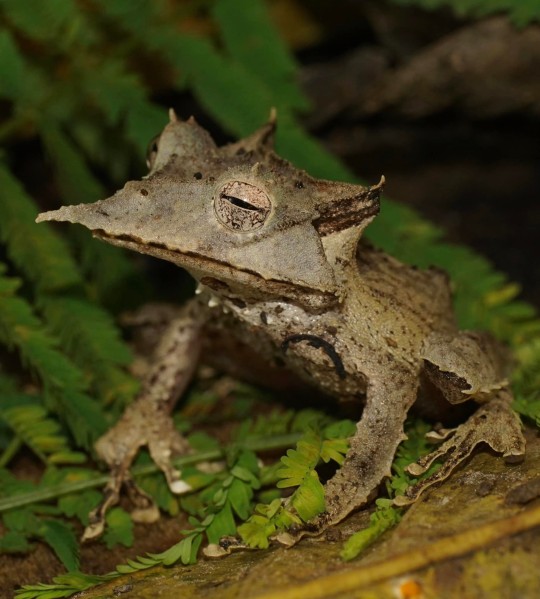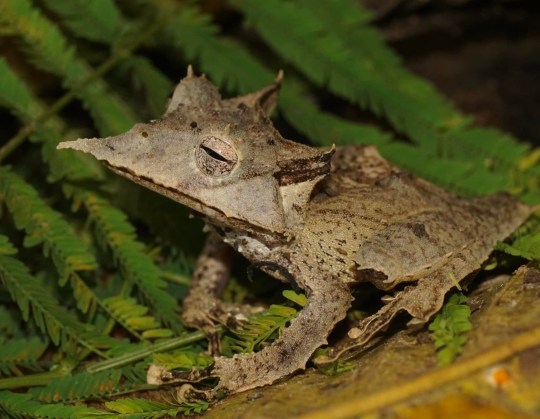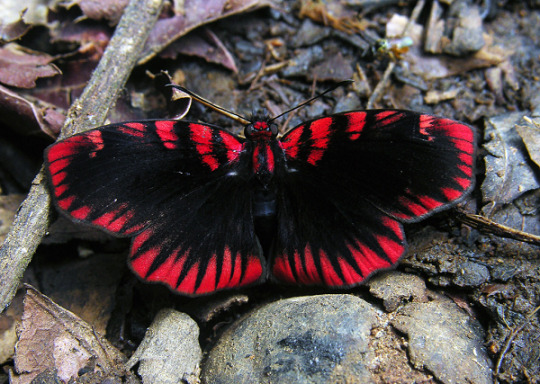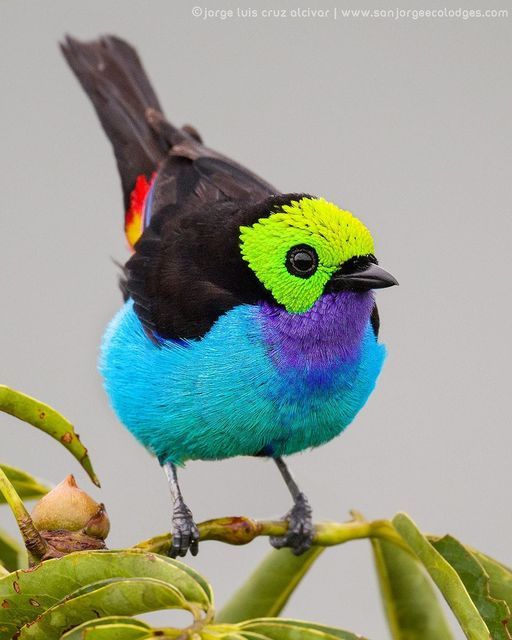#sumaco
Explore tagged Tumblr posts
Text

This week's froggy friend does stick its tongue out, sir. At you, sir? No, not at you, sir, but it sticks out its tongue.
listen here :)
2 notes
·
View notes
Text
That is the single most stoned leaf I've ever seen in my life.



Sumaco Horned Treefrog (Hemiphractus proboscideus), family Hemiphractidae, Loreto, Peru
photographs by Matt Jeppson
16K notes
·
View notes
Text




Wild Sumaco (2) (3) (4) by Panegyrics of Granovetter
#horses#countryside#cloudy#path#mountains#village#forest#jungle#power lines#trees#ecuador#napo province
5 notes
·
View notes
Text

Sumaco Horned Treefrog (Hemiphractus proboscideus), family Hemiphractidae, Loreto, Peru. photographs by Matt Jeppson
2 notes
·
View notes
Text




182) Tinamus osgoodi; kusacz czarny, black tinamou - gatunek ptaka naziemnego, występującego w wilgotnych lasach podgórskich i górskich w Andach w Ameryce Południowej.
Ten gatunek kusaczy został po raz pierwszy opisany przez Henry'ego Boardmana Conovera w 1949 roku na podstawie okazu z Cusco w Peru. Ma dwa podgatunki:
T. o. hershkovitzi - prawie całkowicie ograniczony do kolumbijskich Andów, gdzie występuje na wysokościach od 1400 do 2100 m (4600 do 6900 stóp). Znany jest z zachodniego zbocza Andów Wschodnich w departamencie Huila i San José de la Fragua na wschodnim zboczu Andów Wschodnich w departamencie Caquetá. Sprawozdania z północnych Andów Centralnych w departamencie Antioquia w Kolumbii i północno-wschodnich Andów w prowincjach Napo i Sucumbíos w Ekwadorze prawdopodobnie również obejmują ten podgatunek
T. o. osgoodi - znaleziony na wschodnim zboczu Andów Peruwiańskich w Cuzco, Puno, Madre de Dios i Huánuco. Występuje głównie na wysokościach od 900 do 1400 m (od 3000 do 4600 stóp), ale lokalnie pojawia się nawet na wysokości 2100 m (6900 stóp).
Praktycznie nic nie wiadomo o zachowaniu czarnego tinamou, ale prawdopodobnie jest ono podobne do zachowania jego krewnych. W plonie jednego okazu znaleziono orzechy. Jedyne znane gniazdo znajdowało się na ziemi i zawierało 2 błyszczące, niebieskie jaja. W Peru dorosłe osobniki w okresie rozrodczym odnotowano między marcem a listopadem, a pisklę znaleziono w lutym.
Czarny kusacz został sklasyfikowany jako narażony przez IUCN z zasięgiem występowania wynoszącym 11 600 km2 (4500 mil kwadratowych). W 2004 roku szacowano, że pozostało mniej niż 10 000 osobników. Istnieje niewiele ostatnich zapisów z Kolumbii. Dawniej był opisywany jako lokalnie pospolity w Peru, ale obecnie jest rzadki w tym kraju. Czarny kusacz został zarejestrowany w kilku rezerwatach, w szczególności w Megantoni National Sanctuary, Manú National Park i Sira Communal Reserve w Peru, Sumaco Napo-Galeras National Park w Ekwadorze i Cueva de los Guácharos National Park w Kolumbii. Czarny kusacz jest zagrożony wylesianiem lub utratą siedlisk spowodowaną ekspansją osadnictwa ludzkiego, ekspansją rolnictwa, budową dróg, eksploracją ropy naftowej w Peru i jest polowany dla pożywienia. Nawet w rezerwatach trwają polowania i dochodzi do utraty siedlisk.
0 notes
Text
[ad_1] NVIDIA A100 Tensor Core GPUs running on Supermicro servers have captured leading results for inference in the latest STAC-ML Markets benchmark, a key technology performance gauge for the financial services industry. The results show NVIDIA demonstrating unrivaled throughput — serving up thousands of inferences per second on the most demanding models — and top latency on the latest STAC-ML inference standard. The results are closely followed by financial institutions, three-quarters of which rely on machine learning, deep learning or high performance computing, according to a recent survey. NVIDIA A100: Top Latency Results The STAC-ML inference benchmark is designed to measure the latency of long short-term memory (LSTM) model inference — the time from receiving new input data until the model output is computed. LSTM is a key model approach used to discover financial time-series data like asset prices. The benchmark includes three LSTM models of increasing complexity. NVIDIA A100 GPUs, running in a Supermicro Ultra SuperServer, demonstrated low latencies in the 99th percentile. Accelerated Computing for STAC-ML and STAC-A2, STAC-A3 Benchmarks Considering the A100 performance on STAC-ML for inference — in addition to its record-setting performance in the STAC-A2 benchmark for option price discovery and the STAC-A3 benchmark for model backtesting — provides a glimpse at how NVIDIA AI computing can accelerate a pipeline of modern trading environments. It also shows A100 GPUs deliver leading performance and workload versatility for financial institutions. Predictable Performance for Consistent Low Latency Predictable performance is crucial for low-latency environments in finance, as extreme outliers can cause substantial losses during fast market moves. Notably, there were no large outliers in NVIDIA’s latency, as the maximum latency was no more than 2.3x the median latency across all LSTMs and the number of model instances, ranging up to 32 concurrent instances.1 NVIDIA is the first to submit performance results for what’s known as the Tacana Suite of the benchmark. Tacana is for inference performed on a sliding window, where a new timestep is added and the oldest removed for each inference operation. This is helpful for high-frequency trading, where inference needs to be performed on every market data update. A second suite, Sumaco, performs inference on an entirely new set of data, which reflects the use case where an event prompts inference based on recent history. Leading Throughput in Benchmark Results NVIDIA also submitted a throughput-optimized configuration on the same hardware for the Sumaco Suite in FP16 precision.2 On the least complex LSTM in the benchmark, A100 GPUs on Supermicro servers helped serve up more than 1.7 million inferences per second.3 For the most complex LSTM, these systems handled as many as 12,800 inferences per second.4 NVIDIA A100: Performance and Versatility NVIDIA GPUs offer multiple advantages that lower the total cost of ownership for electronic trading stacks. For one, NVIDIA AI provides a single platform for training and inference. Whether developing, backtesting or deploying an AI model, NVIDIA AI delivers leading performance — and developers don’t need to learn different programming languages and frameworks for research and trading. Moreover, the NVIDIA CUDA programming model enables development, optimization and deployment of applications across GPU-accelerated embedded systems, desktop workstations, enterprise data centers, cloud-based platforms and HPC supercomputers. Efficiencies for Reduced Operating Expenses The financial services industry stands to benefit from not only data throughput advances but also improved operational efficiencies. Reduced energy and square footage usage for systems in data centers can make a big difference in operating expenses. That’s especially pressing as IT organizations make the case for budgetary outlays to cover new high-performance systems.
On the most demanding LSTM model, NVIDIA A100 exceeded 17,700 inferences per second per kilowatt while consuming 722 watts, offering leading energy efficiency.5 The benchmark results confirm that NVIDIA GPUs are unrivaled in terms of throughput and energy efficiency for workloads like backtesting and simulation. Learn about NVIDIA delivering smarter, more secure financial services. [1] SUT ID NVDA221118b, max of STAC-ML.Markets.Inf.T.LSTM_A.2.LAT.v1 [2] SUT ID NVDA221118a [3] STAC-ML.Markets.Inf.S.LSTM_A.4.TPUT.v1 [4] STAC-ML.Markets.Inf.S.LSTM_C.[1,2,4].TPUT.v1 [5] SUT ID NVDA221118a, STAC-ML.Markets.Inf.S.LSTM_C.[1,2,4].ENERG_EFF.v1 [ad_2] Source link
0 notes
Photo

🔥Giant earthworm - Martiodrilus crassus from the foothills of Sumaco Volcano in Ecuador.
0 notes
Photo



Reds of Autumn
Minolta MD Macro 100mm f/4.0 lens on Sony A7.
#Autumn leaves#red leaves#original photographers#photographers on tumblr#lensblr#fall colors#fall leaves#red#autumn#fall#leaves#sunlight#morning light#backlight#woods#forest#sumaco#colors of autumn#reds of autumn#glorious color#woodland#October#New England#vintage lens#minolta#rokkor#sony alpha#Guy Biechele
791 notes
·
View notes
Photo
Blood-red skipper. Bigal River Forest Reserve, Sumaco NP, Ecuador.

#butterfly#butterflies#skipper#skippers#blood-red skipper#blood-red skippers#blood red skipper#blood red skippers#lepidoptera#insect#insects#forest reserve#forest reserves#bigal river#bigal river forest reserve#sumaco#ecuador#nature
34K notes
·
View notes
Photo

GOLDEN-FACED TYRANNULET 🌎 🐞 🐛 🏔 While visiting the Cloudforest for the RESTORATION programme, we found a a non-descriptive Flycatcher was carrying nesting material to a barren trunk in the middle of the ranching field. 🏔 Nature doesn't give up easily!! 🌈🌈 Made me think, we can reverse global warming by reversing our behavior towards nature. 🌈 🏞 🏔 🐛 #Ecuador #deforestation #CloudforestConservation #Cloudforest #Crowdfunding #SumacoÑahui #CloudforestRestoration #Sumaco #EcuadorWildlife #SumacoWidlife #biodiverse #Birding #Birdwatching #BirdingEcuador #CrowdfundingforNature #Nature #Restoration #Wildlife #Conservation #Bird #EcuadorNature #ecuadortravel #dontgiveup #ReGram #RG (at Sumaco Ñahui) https://www.instagram.com/p/BosC8p8FJwf/?utm_source=ig_tumblr_share&igshid=gyfvpg4w6iad
#ecuador#deforestation#cloudforestconservation#cloudforest#crowdfunding#sumacoñahui#cloudforestrestoration#sumaco#ecuadorwildlife#sumacowidlife#biodiverse#birding#birdwatching#birdingecuador#crowdfundingfornature#nature#restoration#wildlife#conservation#bird#ecuadornature#ecuadortravel#dontgiveup#regram#rg
1 note
·
View note
Text

Paradise Tanager (Tangara chilensis), male, family Thraupidae, order Passeriformes, San Jorge Sumaco Bajo, Ecuador
photograph by Jorge Luis Cruz Alcivar The Magic Birding Circuit (@magic.birding)
3K notes
·
View notes
Photo
This giant earthworm worm was found in extremely rich forest soil in the foothills of the Sumaco Volcano in Ecuador. It’s been identified as a Martiodrilus crassus, which is Latin for “worm which feeds on dogs.” Like other earthworms, these giants spend their lives sucking down microbes and decaying plant or animal matter in the soil. Scientist @phil_torres said, “It had a surprisingly similar feel to the earthworms I dig up in my yard. It felt like a long, slimy, ridged muscle. It seems like it is 90% muscle, 9% dirt, 1% nervous system. If I were starving out there, I might be tempted to cook it.” However, at five feet in length, it’s not the longest recorded worm, nor even the planet’s biggest species of earthworm. The Giant Gippsland earthworm, found in the clay soil along streams in Victoria, Australia, can stretch to an impressive 9.8 feet in length! https://www.instagram.com/p/CBG35DeHajb/?igshid=kfus3mbe3oad

#worm#worms#earthworm#earthworms#giant#giant worm#giant worms#sumaco#ecuador#martiodrilus#martiodrilus crassus#animal#animals#nature#south america
122 notes
·
View notes
Photo

#tbt mirador sobre la Ciudad de #Tena , Provincia de #Napo , #Ecuador con el Volcán #Sumaco en la distancia. #amazoníaecuatoriana #orienteecuatoriano #sunburn 😄☀️🌴 #🇪🇨 (at Tena, Ecuador) https://www.instagram.com/p/BwHTNCznUiO/?utm_source=ig_tumblr_share&igshid=vg4rbt9zsiud
0 notes
Text

Sumaco Horned Treefrog (Hemiphractus proboscideus), family Hemiphractidae, Loreto, Peru. photographs by Matt Jeppson
1 note
·
View note
Photo

From Smithsonian Photo of the Day; September 19, 2018:
White-Tipped Sicklebill
This picture shows a White-tipped Sicklebill (Eutoxeres aquila) with mites on its beak in Sumaco, Ecuador
Photographer: Sebastian Di Domenico; Bogota , Colombia
7 notes
·
View notes
Text

Javier Zurita Wildlife Photography is in Ecuador. Sun at 7:59 PM
Wire-crested Thorntail, photo taken in
Sumaco-Ecuador
60 notes
·
View notes